How Two Way Messaging is Revolutionizing Pharma-HCP Communication
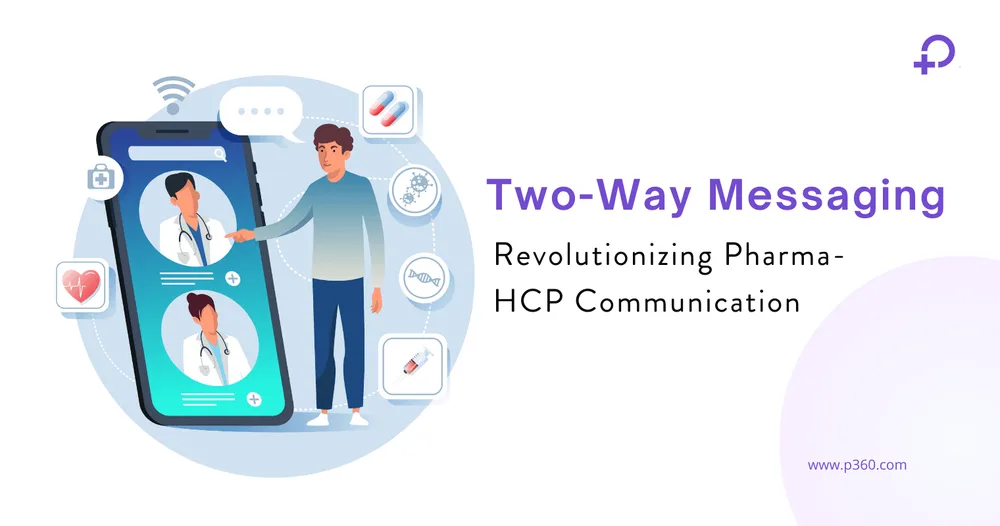
by Apeksha Motghare | Last Updated: March 27, 2025 | 1 min read
Two way messaging is transforming how pharmaceutical companies interact with healthcare professionals (HCPs). Traditional communication methods like emails, phone calls, and in-person meetings are becoming less effective in today’s fast-paced healthcare environment. The need for faster, more responsive engagement has led to the adoption of two way messaging, which enables real-time, interactive communication between pharma companies and HCPs.
The limitations of conventional pharma-HCP communication are evident. Emails often go unread due to inbox overload, while phone calls and in-person meetings are difficult to schedule amid busy patient-care commitments. As a result, delays in information sharing can impact critical decisions regarding treatments, drug updates, and clinical trial participation. Two way messaging overcomes these barriers by providing instant, convenient, and secure conversations that fit seamlessly into an HCP’s workflow.
The demand for healthcare messaging solutions continues to rise as life science companies recognize the importance of real-time engagement. Studies show that real-time messaging for HCPs improves response rates and ensures timely delivery of essential medical updates. Furthermore, the best messaging platform for patient engagement allows pharma reps to share product information, regulatory changes, and clinical insights efficiently.
With two way messaging emerging as the standard, the pharma industry is embracing digital-first communication strategies. By leveraging secure and compliant pharma-HCP communication platforms, companies can foster stronger relationships, drive engagement, and enhance knowledge-sharing—all while optimizing efficiency in the highly regulated life science industry.
Why Pharma-HCP Communication Needs a Digital Shift
Two way messaging is reshaping how pharmaceutical companies interact with healthcare professionals (HCPs). The traditional methods of pharma-HCP communication, such as emails and phone calls, have become inefficient in today’s fast-paced healthcare industry. Many HCPs struggle with overflowing inboxes, making it difficult to engage with pharma representatives. Scheduling in-person meetings is also challenging due to time constraints, reducing opportunities for meaningful interactions. Two way messaging provides an efficient solution by enabling real-time, seamless communication.
The shift toward healthcare messaging solutions is driven by the increasing adoption of digital tools across the industry. Studies show that most HCPs prefer real-time messaging for HCPs over emails and phone calls, as it allows them to receive important updates without disrupting their workflow. Pharma companies benefit as well, ensuring faster response times, improved engagement, and streamlined communication processes. Two way messaging helps bridge the gap between pharma representatives and HCPs, making interactions more accessible and effective.
With the rise of digital-first engagement strategies, life science companies are looking for the best messaging platform for patient engagement to ensure compliance, security, and ease of use. Two way messaging platforms provide instant access to critical information, such as drug updates, treatment guidelines, and regulatory changes. These tools not only enhance pharma-HCP communication but also improve overall collaboration within the industry.
As digital adoption continues to grow, two way messaging is becoming the preferred communication method for pharma companies and HCPs alike. Embracing this transformation ensures faster, more effective interactions, helping companies maintain stronger relationships with HCPs while staying ahead in the evolving healthcare landscape.
The Rise of Two Way Messaging in Pharma
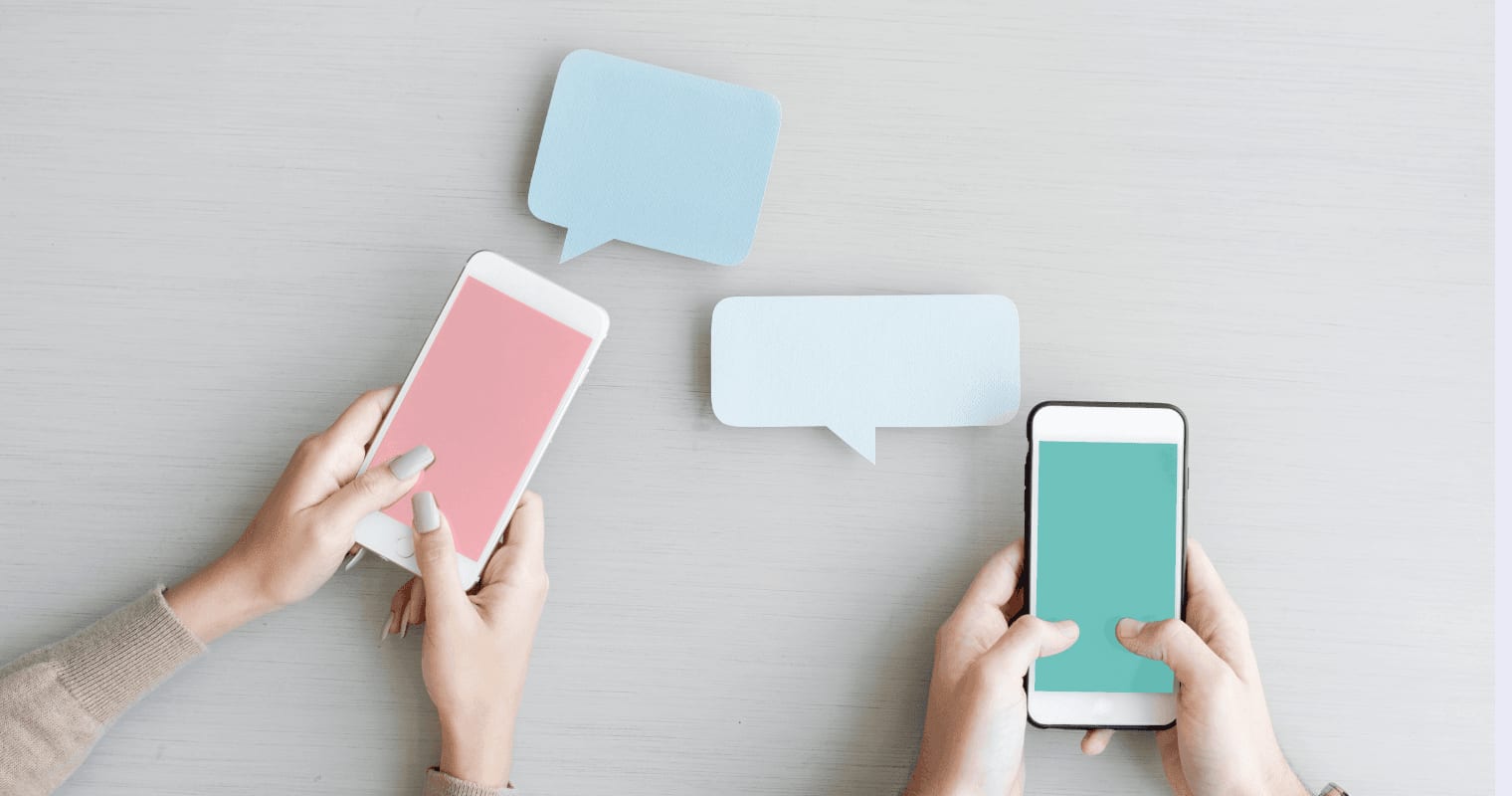
How Two Way Messaging Enhances Engagement and Efficiency
The pharmaceutical industry has long relied on traditional communication channels like emails and phone calls to engage healthcare professionals (HCPs). However, these methods often create delays, leading to inefficient workflows and disengaged HCPs. With the rise of two way messaging, pharma companies are transforming how they connect with HCPs, improving engagement, efficiency, and overall communication effectiveness.
Explore More Relevant Articles on P360
- The BirdzAI ZING Communication Module is Different… Good Different
- The Truth About Pharma Reps Sending Text Messages to Healthcare Professionals
- The Crucial Role of Signature Capture in Healthcare and Pharmaceuticals
- The Truth About Pharma Reps Sending Text Messages to Healthcare Professionals
- The Crucial Role of Signature Capture in Healthcare and Pharmaceuticals
Comparing Traditional Communication vs. Two Way Messaging
Email remains a standard communication tool, but its limitations are evident. Most HCPs receive a flood of emails daily, leading to lower open rates and delayed responses. Studies show that email open rates in healthcare hover around 20%, making it a less effective channel for time-sensitive communication. In contrast, two way messaging delivers messages directly to HCPs via SMS or secure healthcare messaging solutions, ensuring 98% open rates (Mobile Marketing Association, 2023). This immediate reach allows pharma teams to communicate in real-time, leading to faster decision-making and improved collaboration.
HCP Preference for Digital Communication
Modern HCPs prefer convenient and efficient communication methods. According to Accenture’s 2023 report, 90% of physicians favor digital messaging over traditional methods. The ability to send quick, interactive messages through two way messaging improves responsiveness, enabling pharma representatives to provide updates, answer queries, and share critical medical information without disrupting a physician’s workflow.
Strengthening Pharma-HCP Relationships
Effective engagement is crucial in pharma-HCP communication. two way messaging fosters stronger relationships by enabling real-time messaging for HCPs, ensuring that interactions are quick, personalized, and meaningful. Unlike emails, which often feel impersonal and transactional, interactive messaging creates a direct line of communication, allowing pharma teams to address HCP concerns instantly. This approach builds trust, enhances engagement, and positions two way messaging as the best messaging platform for patient engagement and professional collaboration.
Improving Compliance and Workflow Efficiency
Compliance in pharma communication is essential. Secure healthcare messaging solutions ensure that two way messaging adheres to industry regulations while streamlining workflows. Automated reminders, digital approvals, and instant responses reduce administrative burdens on HCPs, allowing them to focus on patient care. Additionally, the ability to receive and acknowledge messages in real-time reduces follow-ups, increasing overall efficiency for both pharma companies and healthcare providers.
With two way messaging becoming the preferred channel for pharma-HCP communication, its impact on engagement, efficiency, and relationship-building cannot be overlooked. Compared to traditional email, its superior real-time messaging for HCPs drives responsiveness, compliance, and convenience. As the industry embraces digital transformation, investing in the best messaging platform for patient engagement will ensure seamless interactions and long-term success in pharmaceutical communication.
Key Benefits of Two Way Messaging for Pharma-HCP Communication
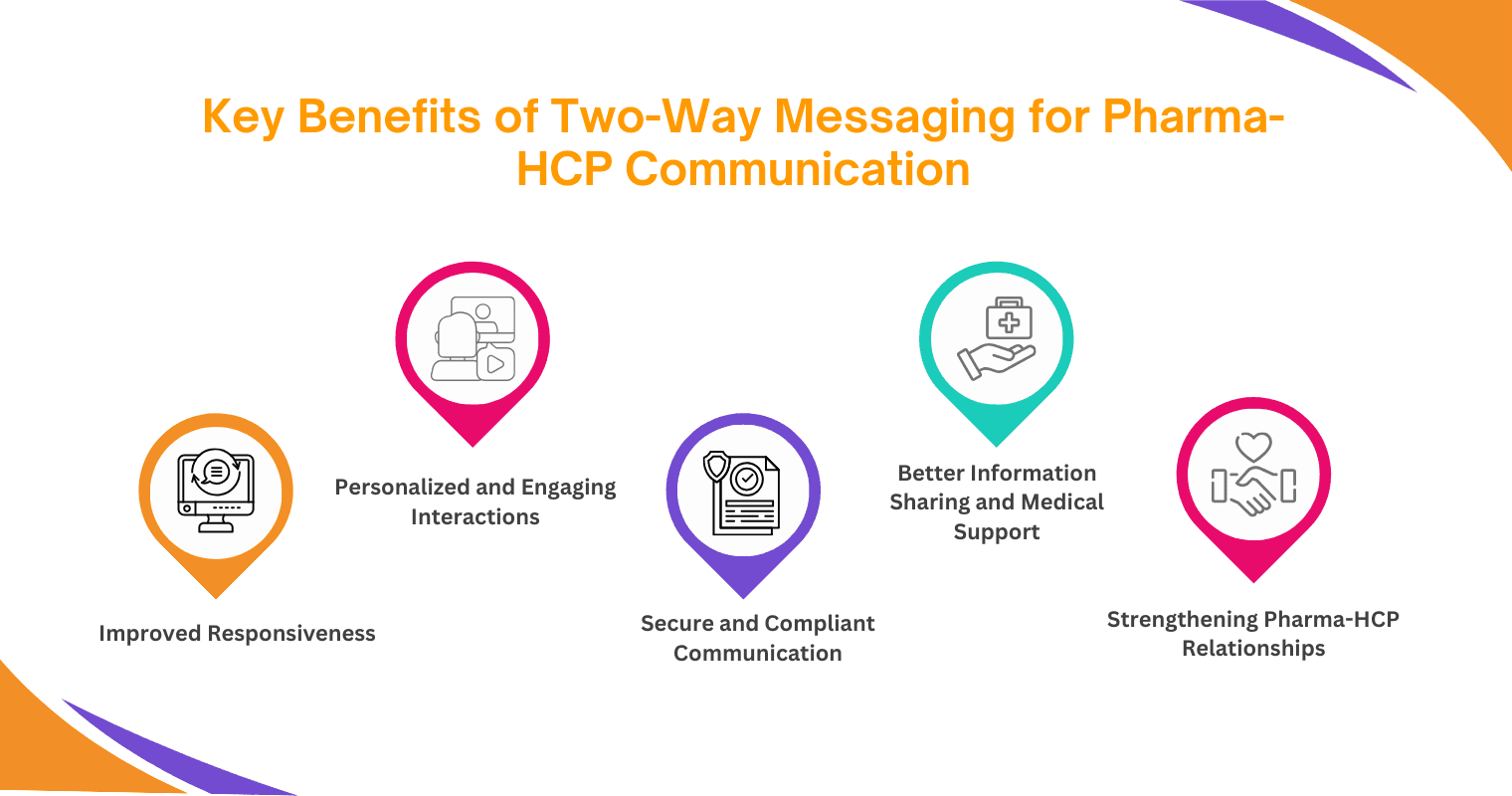
Improved Responsiveness
Timely communication is essential in the pharmaceutical industry. Traditional methods like emails and phone calls often lead to delays, causing inefficiencies in pharma-HCP communication. With two way messaging, HCPs can respond at their convenience, eliminating the need for back-and-forth emails or missed calls. Instant messaging enables real-time interactions, reducing the lag in information exchange.
Pharmaceutical representatives can send drug updates, regulatory alerts, or medical inquiries, and HCPs can reply instantly. This seamless interaction improves response times, ensuring that essential data reaches HCPs when they need it most. The ability to engage in real-time messaging for HCPs enhances decision-making and fosters better collaboration.
Personalized and Engaging Interactions
Engagement in pharma-HCP communication depends on how relevant and personalized the content is. two way messaging allows pharma companies to create tailored interactions based on an HCP’s preferences, specialty, and past engagement. Personalized messages feel more relevant, increasing the likelihood of response and participation.
Healthcare messaging solutions integrated with AI help automate and optimize interactions. AI-powered chatbots can answer routine queries, schedule follow-ups, and provide targeted content. These smart features ensure that HCPs receive the most relevant information without the need for constant manual input. Automated yet real-time messaging for HCPs streamlines communication, reducing the burden on both pharma reps and healthcare providers.
Secure and Compliant Communication
Pharmaceutical communication must comply with strict regulations like HIPAA and GDPR to protect patient and provider data. two way messaging platforms designed for the industry ensure compliance with these regulations, preventing data breaches and unauthorized access.
End-to-end encryption secures conversations, safeguarding sensitive medical discussions between pharma companies and HCPs. Unlike email, which is prone to phishing and security risks, encrypted healthcare messaging solutions provide a safer and more reliable alternative. Maintaining regulatory compliance while enhancing engagement makes two way messaging the preferred method for pharmaceutical interactions.
Better Information Sharing and Medical Support
The exchange of critical medical information must be fast, accurate, and easily accessible. two way messaging provides instant access to drug updates, clinical trial details, and regulatory changes, helping HCPs stay informed. Instead of searching through long email threads, physicians can receive and retrieve information instantly through secure messaging.
Beyond industry updates, the best messaging platforms for patient engagement enhance patient education. Pharma companies can equip HCPs with resources like treatment guidelines, dosage recommendations, and patient-friendly materials. With two way messaging, medical professionals can forward educational content to patients, improving adherence to prescribed treatments. This seamless communication flow strengthens the connection between pharma companies, HCPs, and patients, creating a more informed healthcare ecosystem.
Features of an Effective Healthcare Messaging Solution
The effectiveness of two way messaging in the pharmaceutical industry depends on the features offered by the platform. A well-designed healthcare messaging solution should enable seamless, secure, and data-driven pharma-HCP communication while ensuring compliance with industry regulations. Below are the key features that make a two way messaging platform effective for the life sciences industry.
Multi-Channel Support
An effective two way messaging system should provide multi-channel support, allowing pharma companies to engage HCPs through SMS, WhatsApp, Email, and in-app messaging. Different HCPs prefer different communication channels based on their schedules and accessibility. Multi-channel capabilities ensure that messages are delivered where they are most likely to be seen.
-
SMS and WhatsApp: Provide instant, direct communication with real-time messaging for HCPs.
-
Email: Used for in-depth updates, newsletters, and regulatory documents.
-
In-App Messaging: Offers a centralized communication hub within pharma applications.
A platform with diverse messaging options ensures uninterrupted pharma-HCP communication, increasing response rates and engagement.
AI-Powered Personalization
Pharma representatives need to deliver the right message at the right time. AI-powered personalization enhances two way messaging by analyzing HCP preferences, previous interactions, and engagement history.
-
Automated responses: AI chatbots handle routine queries, freeing up reps for critical interactions.
-
Personalized recommendations: The system suggests relevant drug information, clinical trial updates, and patient resources based on an HCP’s specialty.
-
Smart scheduling: AI optimizes message timing, ensuring HCPs receive updates when they are most likely to respond.
This personalization strengthens pharma-HCP communication, making each interaction more relevant and impactful.
Analytics and Engagement Metrics
To maximize the effectiveness of two way messaging, a healthcare messaging solution must include analytics and engagement tracking. Pharma companies need insights into message performance to refine their communication strategies.
-
Message Open Rates: Helps assess which channels work best for different HCP segments.
-
Response Time Tracking: Ensures that pharma reps can follow up with engaged HCPs promptly.
-
Engagement Heatmaps: Shows the best times and formats for real-time messaging for HCPs.
With data-driven insights, pharmaceutical teams can optimize two way messaging campaigns, improving both reach and impact.
Secure and Regulatory-Compliant Messaging
In pharma-HCP communication, security and compliance are non-negotiable. The best two way messaging platforms adhere to industry regulations like HIPAA and GDPR, ensuring that sensitive medical information remains protected.
-
End-to-End Encryption: Safeguards patient data and private pharma-HCP discussions.
-
Access Control Features: Ensures only authorized personnel can view and send messages.
-
Audit Trails: Tracks communication history to meet regulatory requirements.
By prioritizing security, the best messaging platforms for patient engagement ensure compliance while maintaining seamless communication between pharma companies and HCPs.
A powerful two way messaging solution must combine multi-channel support, AI-powered personalization, analytics, and compliance to create an efficient healthcare messaging solution. These features help pharmaceutical companies build stronger relationships with HCPs, improve engagement, and streamline medical communication.
How ZING from P360 is Transforming Pharma-HCP Communication
What is ZING Engagement Suite?
ZING Engagement Suite is an advanced two way messaging platform designed for the pharmaceutical industry. Unlike conventional messaging tools, ZING provides real-time messaging for HCPs, ensuring seamless and compliant pharma-HCP communication. With its AI-driven capabilities, secure infrastructure, and multi-channel support, ZING sets a new standard in healthcare messaging solutions.
Key Differentiators of ZING
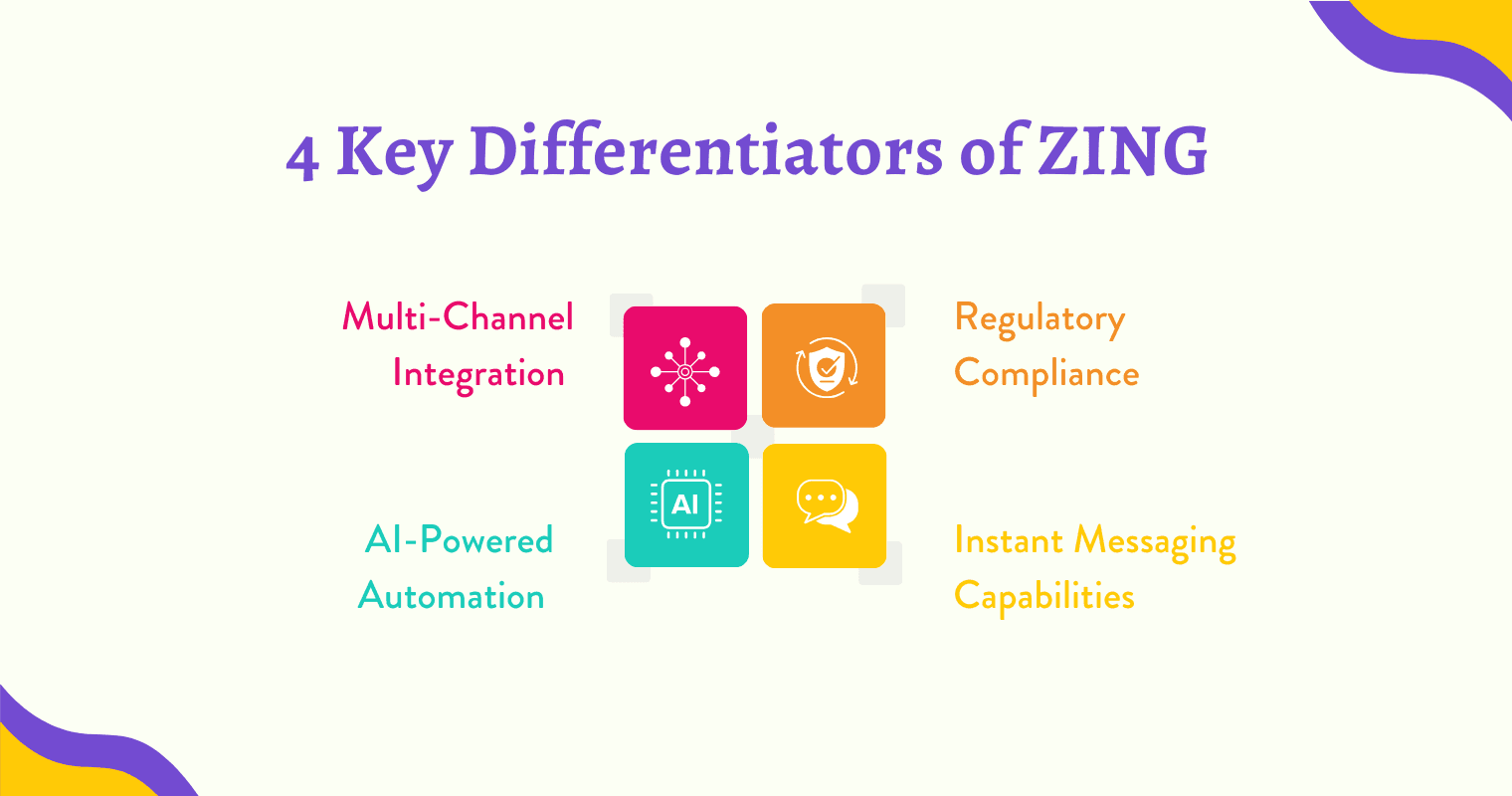
-
Multi-Channel Integration: ZING supports SMS, WhatsApp, email, and in-app messaging, ensuring HCPs receive communications on their preferred platform.
-
AI-Powered Automation: The system personalizes interactions, optimizing engagement based on HCP behavior and preferences.
-
Regulatory Compliance: ZING is HIPAA and GDPR-compliant, ensuring secure, encrypted pharma-HCP communication.
-
Instant Messaging Capabilities: Sales reps can send updates, receive responses, and manage interactions without delays.
By combining automation, security, and two way messaging, ZING creates a more effective and engaging experience for pharma teams and healthcare providers.
Why Pharma Companies Prefer ZING?
Pharma organizations face increasing pressure to improve communication efficiency. Traditional channels, like emails and phone calls, create delays and reduce engagement. ZING eliminates these barriers by offering real-time messaging for HCPs, ensuring faster responses and stronger professional relationships.
AI-Driven Personalization
ZING’s AI-powered engine enhances pharma-HCP communication by delivering tailored content. Messages are sent based on HCP preferences, previous interactions, and engagement history. Automated workflows reduce manual tasks, allowing sales teams to focus on high-value interactions.
Secure and Compliant Messaging
Data security is critical in healthcare. ZING ensures all two way messaging exchanges comply with HIPAA and GDPR regulations. Features such as end-to-end encryption and access controls prevent unauthorized access, making it one of the most secure healthcare messaging solutions available.
Seamless Real-Time Communication
HCPs require immediate access to medical updates, clinical trial details, and drug information. ZING’s real-time messaging for HCPs ensures that pharma reps can share critical updates instantly. Unlike emails that may go unread, ZING’s direct notifications ensure that important messages are seen and acted upon.
How ZING Enhances Pharma-HCP Collaboration
Pharmaceutical companies depend on two way messaging to improve collaboration with HCPs. ZING optimizes this process by streamlining interactions, enhancing clinical trial coordination, and supporting patient engagement efforts.
Streamlining Sales Rep-HCP Interactions
Pharma sales teams rely on timely communication to engage HCPs. With ZING, representatives can:
-
Schedule automated follow-ups and reminders.
-
Send educational content, drug updates, and compliance alerts.
-
Receive instant feedback, reducing delays in decision-making.
This continuous, real-time messaging for HCPs strengthens relationships and improves overall sales alignment.
Improving Clinical Trial Coordination
ZING is an essential tool for managing clinical trials. It enables:
-
Instant communication between researchers, sponsors, and HCPs.
-
Automated scheduling for trial updates and compliance notifications.
-
Real-time tracking of trial progress through integrated messaging.
By enhancing coordination, two way messaging accelerates trial workflows and ensures regulatory compliance.
Enhancing Patient Engagement
ZING is also recognized as the best messaging platform for patient engagement. It allows pharma companies to:
-
Provide HCPs with educational materials to share with patients.
-
Enable automated appointment reminders and prescription refill alerts.
-
Support remote patient monitoring through secure healthcare messaging solutions.
By streamlining pharma-HCP communication, ZING empowers healthcare providers with the tools they need to improve patient care while maintaining compliance.
ZING from P360 is revolutionizing two way messaging in the pharmaceutical industry. By offering AI-driven automation, real-time messaging for HCPs, and secure healthcare messaging solutions, it enhances collaboration, compliance, and engagement.
The Future of Pharma-HCP Communication
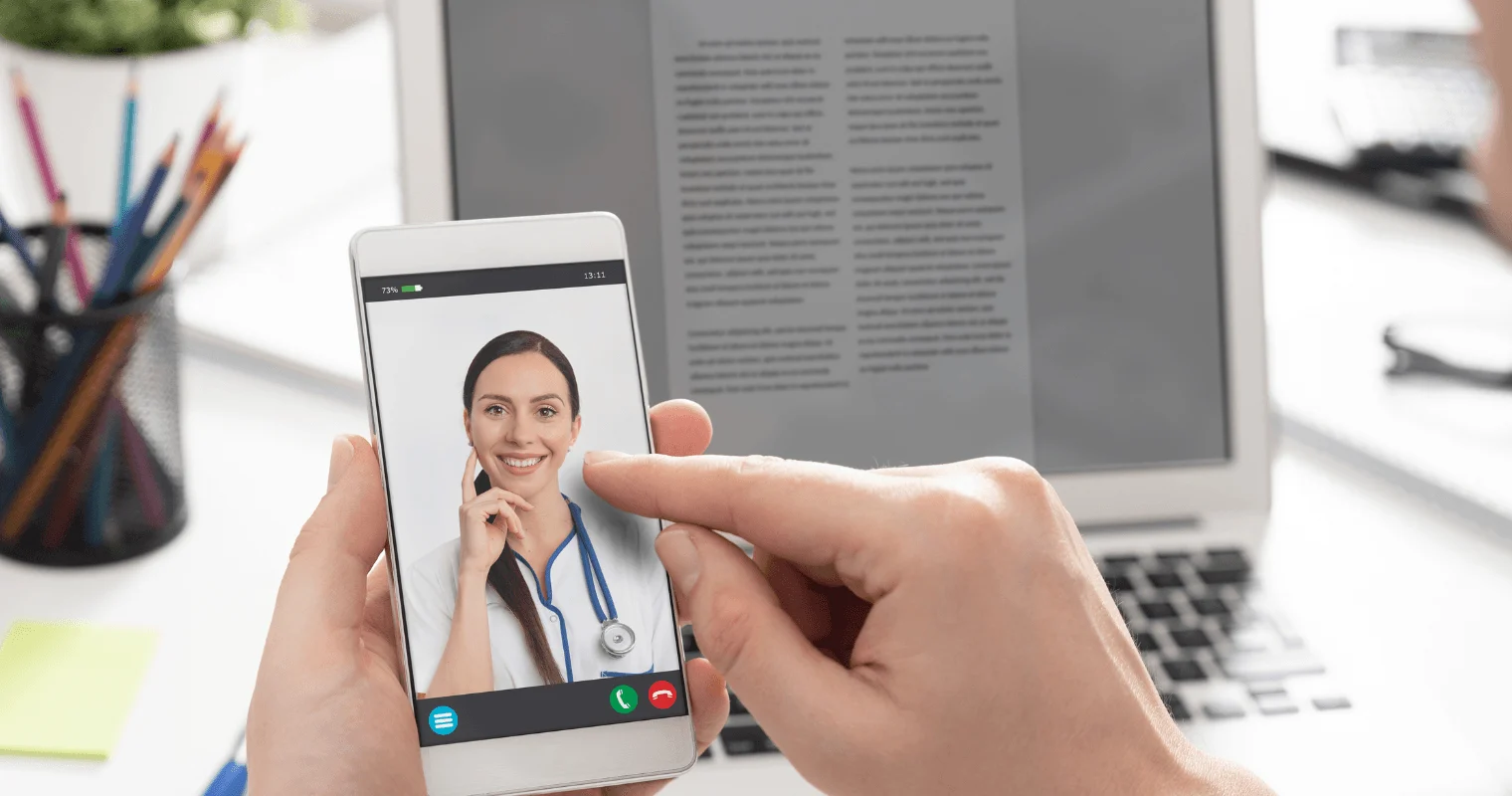
The Evolution of Two Way Messaging in Pharma
The pharmaceutical industry has seen a shift from traditional communication methods to two way messaging. Earlier, pharma companies relied on emails and phone calls, which often led to delays in pharma-HCP communication. Today, digital transformation has enabled faster, more efficient interactions through healthcare messaging solutions. The demand for instant, personalized communication has made two way messaging the preferred choice for engaging with HCPs.
With the rise of mobile-first communication, real-time messaging for HCPs has become essential. Physicians, researchers, and medical professionals expect immediate access to critical information, driving the adoption of secure, compliant two way messaging platforms.
The Increasing Role of AI and Automation in Pharma-HCP Communication
Artificial intelligence (AI) and automation are reshaping pharma-HCP communication. AI-powered healthcare messaging solutions analyze engagement patterns, predict communication preferences, and optimize message delivery.
-
Automated Follow-Ups: AI-driven messaging platforms ensure that pharma reps stay connected with HCPs without manual intervention.
-
Personalized Engagement: Machine learning enables two way messaging systems to deliver relevant content based on an HCP’s specialty and past interactions.
-
Chatbots for Instant Support: Automated chat solutions provide real-time assistance, answering queries and scheduling meetings efficiently.
By integrating AI, two way messaging platforms enhance engagement, reduce response times, and improve communication effectiveness in the life sciences industry.
Why Real-Time Messaging Solutions Like ZING Will Define the Future of Healthcare Engagement
As digital transformation accelerates, platforms like ZING Engagement Suite are setting new standards for pharma-HCP communication. With secure, real-time messaging for HCPs, ZING ensures instant, compliant interactions between pharma teams and healthcare providers.
-
HIPAA & GDPR Compliance: Secure data exchange protects patient and physician confidentiality.
-
Multi-Channel Communication: Messaging across SMS, WhatsApp, and email ensures seamless engagement.
-
Improved Patient Support: The best messaging platform for patient engagement enables better coordination between HCPs and pharma companies.
Future advancements in two way messaging will continue to drive efficiency, improve collaboration, and create personalized interactions. As AI and automation evolve, healthcare messaging solutions like ZING will redefine how pharma companies engage with HCPs, ensuring faster, smarter, and more meaningful communication.